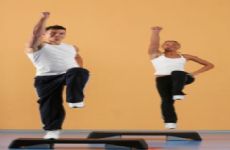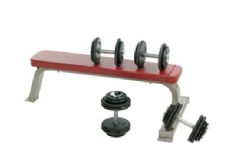|
Usually, the average exerciser doesn't think about physiology or kinesiology when he or she is exercising. Sure, you think about form, doing your exercises correctly, and achieving balance—both in terms of overall fitness (a balance of cardio, strength training and flexibility) and individual workouts (a balance in the body where you exercise all of your major muscle groups). And that's great! But there is also a lot going on in your body during each workout, and sometimes, learning more about exactly what is happening can help you work out more effectively so you can get better results. Whether or not you've heard of concentric and eccentric muscle contractions, you can benefit from learning the difference—especially because focusing on ONE of them can help you get even better results from your strength training program—without spending more time in the gym. Fitness Defined: Concentric and Eccentric Muscle ContractionsConcentric (Positive) Contractions: Put simply, this contraction shortens your muscle as it acts against resistive force (like a weight). For example, during a biceps curl, the biceps contract concentrically during the lifting phase of the exercise. Eccentric (Negative) Contractions: During these contractions, the muscles lengthen while producing force—usually by returning from a shortened (concentric) position to a resting position. Using the same example above, the lowering the weight back down during a biceps curl is an eccentric contraction for the biceps. Think of this as "putting on the breaks." You're basically slowing the descent of the weight back down instead of allowing the weight (and gravity) to just pull your arm back down passively. So Why Do the Different Types of Contractions Matter?It's a good idea to include both concentric and eccentric contractions in your strength-training program. Luckily, most traditional exercises include these movements—a lifting phase (using the shortening or concentric phase) and a lowering phase to return to the start position. However, how much time you spend in each phase can affect your results. Here are some facts about the difference between concentric and eccentric movements:
Happy Lifting (and Lowering)! Have you ever tried negative training? Will you think more about the eccentric phase of your exercises now that you know how much it can help you? |
Related Entries
More From SparkPeople
|






















.png)